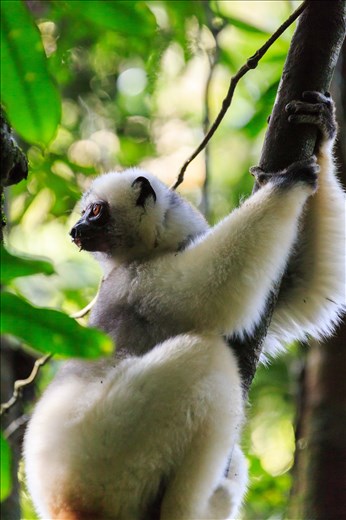
MADAGASCAR | Sunday, 23 November 2014 | Views [604] | View Larger Image
Buoyed by our early success, we spent the third day at Camp Two, searching for the Silky Sifakas. However, it seemed that we had lucked out on the second day, as they were nowhere to be seen. We woke up to a beautifully clear day on the fourth day, so at the urging of the guide, who said this much clear weather was very rare in the rainforest, we decided to climb to the top of Mount Marojejy, spending the night at Camp Three.
The climb was difficult and we felt a great sense of achievement in making it to the top but our main objective for visiting this remote National park was not to climb a mountain but to see and photograph the critically endangered Silky Sifakas. With that in mind we climbed down to Camp Two to continue our search. We only had enough food for one more night, so this was our last chance to see the Sifakas.
Again, our guide entered the forest, searching for the Sifakas. We waited patiently at the camp but he returned just before dark without seeing them. Our final chance would be in the morning before a long hike down the hill to Park Headquarters.
We started the day very early, with the guide searching in the forest near where we had seen them the other day. We were all packed and ready to hike down when we heard the same excited call from the forest. Our guide had found them again but the calls were coming from down the hill not up. We grabbed our gear and with the cook at our side, we headed down the slope.
This time we arrived to find a family of 5 adults and juveniles sitting quietly high up in the trees. We watched them for around 30 minutes before they started moving down the branches, taking massive leaps from trunk to trunk. This was amazing to watch, as they jump and land feet first unlike any other primate species I had seen before.
As the 5 Sifakas came down towards us they each followed the same route that the first one made. This first Sifaka was rubbing itself on each of the tree trunks with its chest. This meant that all 5 family members passed just in front of us stopping to smell the marking from the first Sifaka before leaping to the next trunk. They were completely unperturbed by our presence, which allowed us to view them acting naturally and photograph them at the same time.